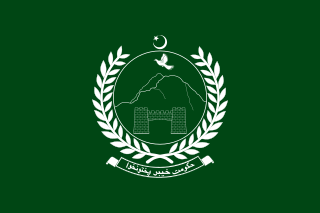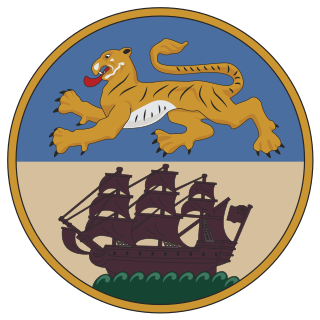Related Research Articles

The Constituent Assembly of India was elected to frame the Constitution of India. It was elected by the 'Provincial Assembly'. Following India's independence from the British rule in 1947, its members served as the nation's first Parliament as the 'Provisional Parliament of India'. It was conceived and created by V. K. Krishna Menon, who first outlined its necessity in 1933 and enshrined it as a Congress demand.

Direct Action Day was the day the All-India Muslim League decided to take "direct action" for a separate Muslim homeland after the British exit from India. Also known as the 1946 Calcutta Killings, it was a day of nationwide communal riots. It led to large-scale violence between Muslims and Hindus in the city of Calcutta in the Bengal province of British India. The day also marked the start of what is known as The Week of the Long Knives. While there is a certain degree of consensus on the magnitude of the killings, including their short-term consequences, controversy remains regarding the exact sequence of events, the various actors' responsibility and the long-term political consequences.
United Bengal was a proposal to transform Bengal Province into an undivided, sovereign state at the time of the Partition of India in 1947. It sought to prevent the division of Bengal on religious grounds. The proposed state was to be called the Free State of Bengal. A confessionalist political system was mooted. The proposal was not put up for a vote. The British government proceeded to partition Bengal in accordance with the Mountbatten Plan and Radcliffe Line.

The Provincial Assembly ofKhyber Pakhtunkhwa is a unicameral legislature of elected representatives of the Pakistani province of Khyber Pakhtunkhwa, which is located in Peshawar, the provincial capital. It was established under Article 106 of the Constitution of Pakistan, having a total of 145 seats, with 115 general seats, 26 seats reserved for women and 4 reserved for non-Muslims.

The Noakhali riots were a series of semi-organized massacres, rapes and abductions, combined with looting and arson of Hindu properties, perpetrated by the Muslim community in the districts of Noakhali in the Chittagong Division of Bengal in October–November 1946, a year before India's independence from British rule.

Provincial elections were held in British India in the winter of 1936–37 as mandated by the Government of India Act 1935. Elections were held in eleven provinces - Madras, Central Provinces, Bihar, Orissa, the United Provinces, the Bombay Presidency, Assam, the North-West Frontier Province, Bengal, Punjab and Sind.

After power transformation, on 15 August 1947, Jawaharlal Nehru assumed office as the first Prime Minister of India and chose fifteen ministers to form the First Nehru ministry.

Provincial elections were held in British India in January 1946 to elect members of the legislative councils of the Indian provinces. The consummation of British rule in India were the 1945/1946 elections. As minor political parties were eliminated, the political scene became restricted to the Indian National Congress and the Muslim League who were more antagonised than ever. The Congress, in a repeat of the 1937 elections, won 90 percent of the general non-Muslim seats while the Muslim League won the majority of Muslim seats (87%) in the provinces. Nevertheless, the All India Muslim League verified its claim to be the sole representative of Muslim India. The election laid the path to Pakistan.
Legislative elections were held in East Bengal between 8 and 12 March 1954, the first since Pakistan became an independent country in 1947. The opposition United Front led by the Awami League and Krishak Sramik Party won a landslide victory with 223 of the 309 seats. The Muslim League Chief Minister of East Pakistan Nurul Amin was defeated in his own constituency by Khaleque Nawaz Khan by over 7,000 votes, with all the Muslim League ministers losing their seats.

The Prime Minister of Bengal was the head of government of Bengal Province and the Leader of the House in the Bengal Legislative Assembly in British India. The position was dissolved upon the Partition of Bengal during the partition of India in 1947.

The Legislatures of British India included legislative bodies in the presidencies and provinces of British India, the Imperial Legislative Council, the Chamber of Princes and the Central Legislative Assembly. The legislatures were created under Acts of Parliament of the United Kingdom. Initially serving as small advisory councils, the legislatures evolved into partially elected bodies, but were never elected through suffrage. Provincial legislatures saw boycotts during the period of dyarchy between 1919 and 1935. After reforms and elections in 1937, the largest parties in provincial legislatures formed governments headed by a prime minister. A few British Indian subjects were elected to the Parliament of the United Kingdom, which had superior powers than colonial legislatures. British Indian legislatures did not include Burma's legislative assembly after 1937, the State Council of Ceylon nor the legislative bodies of princely states.

The Bengal Legislative Assembly was the largest legislature in British India, serving as the lower chamber of the legislature of Bengal. It was established under the Government of India Act 1935. The assembly played an important role in the final decade of undivided Bengal. The Leader of the House was the Prime Minister of Bengal. The assembly's lifespan covered the anti-feudal movement of the Krishak Praja Party, the period of World War II, the Lahore Resolution, the Quit India movement, suggestions for a United Bengal and the partition of Bengal and partition of British India.
Omar Hayat Malik was a Pakistani politician, educationist and diplomat.
Bhabesh Chandra Nandi was a representative of East Pakistan in the Constituent Assembly of Pakistan.
Jnanendra Chandra Majumdar was an anti-colonial Bengali politician, and a representative of East Pakistan to the Constituent Assembly of Pakistan.

Akshay Kumar Das was a Bengali Hindu politician of Pakistan, who served as a representative of East Pakistan in both the First and Second Constituent Assemblies, and held multiple ministries across the 1950s in governments formed by different political parties.
Seth Sukhdev Udhavdas was a Sindhi landlord and anti-colonial politician associated with the Indian National Congress. After partition, he chose to stay in Pakistan and allied with the Pakistan National Congress. In July 1949, Sukhdev was inducted as the non-Muslim representative of Sindh in the Constituent Assembly of Pakistan since Jairamdas Daulatram —the erstwhile representative in the Constituent Assembly of India on a Congress ticket— chose to stay in India.
Sardar Asad Ullah Jan Khan was a Pakistani Pakhtun politician from Kulachi, who represented North-West Frontier Province in the Constituent Assembly of Pakistan. Chieftain of the Gandapur tribal segment, Khan commanded influence in the society; besides, he was a local land magnate.
Shaikh Karamat Ali was a Pakistani Muslim League politician from Punjab, Pakistan.
Zahirul Hasnain Lari was a lawyer, a known Muslim League leader from Uttar Pradesh, India. He was a Pakistan movement activist and some acts of nationalism in his student life in India are noted.
References
- 1 2 3 Calcutta Municipal Gazette. Office of the Registrar of Newspapers. Press in India. 1964. p. 39.
- ↑ Chatterjee, Srilata (2003). "Congress in Electoral Politics and After, 1935–39". Congress Politics in Bengal 1919–1939. Anthem Press. p. 182. ISBN 978-1-84331-366-3.
- ↑ Return showing the results of Elections in India: 1937 (PDF). London: His Majesty's Stationery Office. November 1937. pp. 4, 100, 102.
- ↑ "Vol. III of Press Information Bureau's Morgue and Ref Series: (1) Analysis of the Results of General Elections to the Central and Provincial Legislatures Held In 1945-46 (2) Indian Political Parties, and (3) Provincial Minstries 1937-45". Home Political, ID: HOME_POLITICAL_I_1945_NA_F-79-46. National Archive of India.
- ↑ Rao, B. Shiva (1968). The Framing of India's Constitution: A Study. Nasik, India: The Indian Institute of Public Administration. pp. 93–95.
- ↑ Rao, B. Shiva (1968). The Framing of India's Constitution: Select Documents. Vol. I. Nasik, India: The Indian Institute of Public Administration. p. 309.
- ↑ "Pakistan". The Commonwealth Relations Office List 1952. London: Her Majesty's Stationery Office. 1952. p. 171.